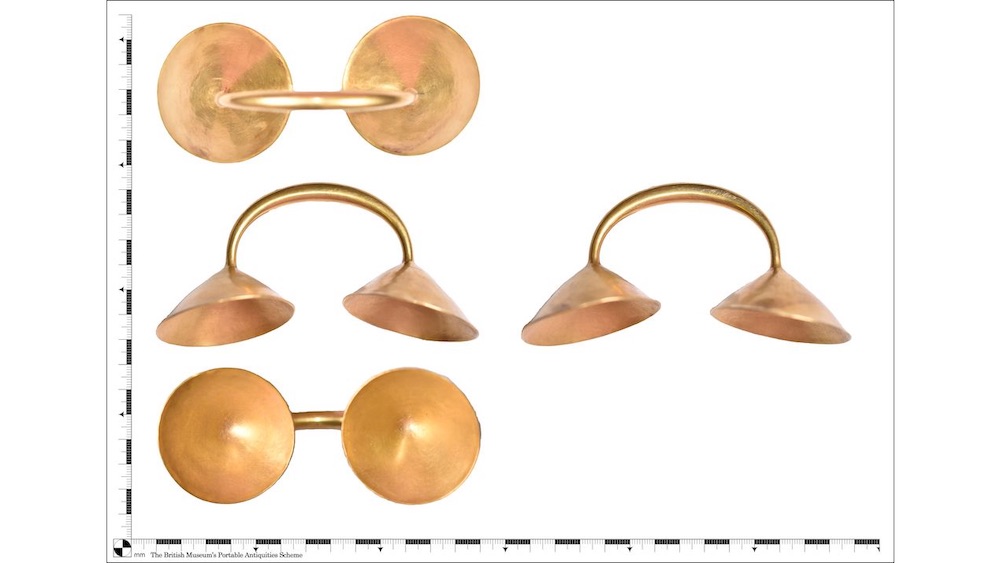'Beautifully preserved,' 3,000-year-old gold clasp unearthed by metal detectorist in UK
A metal detectorist discovered the gold treasure in Staffordshire, England.

An amateur metal detectorist in the United Kingdom has unearthed a "remarkable" 3,000-year-old gold clasp that would've been used to fasten clothing during the Late Bronze Age (1000 to 800 B.C.).
Jonathan Needham discovered the artifact while metal detecting in Staffordshire, a county in central England, according to a statement from The British Museum.
"Straight away people said it was 3,000-year-old gold and at that point we were able to celebrate," Needham told BBC News. "We were punching the roof at what we had found."
He immediately reported his find to the Derby Museum in accordance with The Treasure Act 1996, which requires citizens to report archaeological finds of significance.
Museum researchers determined that the "beautifully preserved" piece was likely made in Ireland and provides a "cultural link between Ireland and Britain during the Bronze Age," according to the statement.
Related: Bronze Age 'treasure' was crafted with extraterrestrial metal
The hammered-gold fastener contains a "bow" or "handle" ending that connects two "skillfully raised cone-shaped terminals" and would have been used to clasp together a dress, skirt or cloak "of an important person," according to the statement. It contains several scratch marks, likely due to wear, and measures approximately 5 inches (12.7 centimeters), according to the Portable Antiquities Scheme, a collaboration between The British Museum and National Museum Wales that records archaeological finds.
Sign up for the Live Science daily newsletter now
Get the world’s most fascinating discoveries delivered straight to your inbox.
The piece is one of seven that have been found across England and Wales, but researchers consider it the "best preserved example from Britain." The British Museum deemed the gold fastener one of the U.K.'s most important archaeological discoveries of 2022, according to the statement. Other noted discoveries from this year include a carved bone rosary bead and a hoard of Iron Age gold coins hidden inside a hollow flint container, according to The British Museum.
The museum plans to acquire the piece as part of its permanent collection.
Jennifer Nalewicki is former Live Science staff writer and Salt Lake City-based journalist whose work has been featured in The New York Times, Smithsonian Magazine, Scientific American, Popular Mechanics and more. She covers several science topics from planet Earth to paleontology and archaeology to health and culture. Prior to freelancing, Jennifer held an Editor role at Time Inc. Jennifer has a bachelor's degree in Journalism from The University of Texas at Austin.










